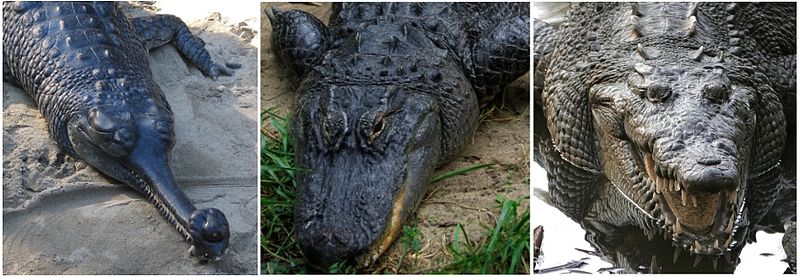Differences Between Crocodile and Alligator

Excerpt from Crocodilia:
While alligators (and caimans) are often confused with crocodiles, they belong to two quite separate taxonomic families.
The most obvious external differences are visible in the head — alligators and caimans have wider and shorter heads, and a more U-shaped than V-shaped snout. The alligator's upper jaw is wider than its lower jaw, and the teeth in the lower jaw fit into small depressions in the upper jaw. The upper and lower jaws of the crocodiles are the same width, and teeth in the lower jaw fall along the edge or outside the upper jaw when the mouth is closed. When the crocodile's mouth is closed, the large fourth tooth in the lower jaw fits into a constriction in the upper jaw. For hard-to-distinguish specimens, the protruding tooth is the most reliable feature to define a species. However, in captivity, alligators and caimans may show jaw deformities which result in lower teeth protruding.
Alligators lack the jagged fringe which appears on the hind legs and feet of the crocodile and have the toes of the hind feet webbed, not more than halfway to the tips. Alligators strongly prefer freshwater, while crocodiles can better tolerate seawater due to specialized glands for filtering out salt. However, both can survive in either.
Both species of alligator also tend to be darker in color than crocodiles — often nearly black — but color is very dependent on water quality. Algae-laden waters produce greener skin, while tannic acid from overhanging trees can produce often darker skin.
When cleaning alligator pools, some zookeepers can tread on alligators without eliciting a response, though crocodiles almost invariably react aggressively and are for the most part more aggressive in their natural habitat.